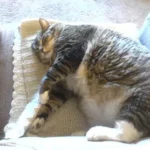Re-Writing Your Scene Part III

In the last posts, we talked about assessing your scene’s purpose and how it will play if it is put into action. Now, let’s talk about re-writing your paragraphs and sentences to make the scene sparkle.
Writing Tip for Today: What are some revision techniques for polishing a drafted scene?
Show and Tell
You’ve heard the adage to “show, don’t tell?” Most of the time, it’s a good thing to remember. Yet if you try to show every last detail of a scene, readers won’t know what to really pay attention to. In general, show the parts you need readers to know and remember. Tell them (or leave out) stuff that doesn’t matter to the story outcome. For instance, if the scene involves two people ordering food at a restaurant, you’ll likely want to keep the focus (the SHOW) on the story line and the TELL on details that matter little, such as exactly what the people are ordering (unless that’s the point). If we bore readers with inconsequential stuff (examples might include nattering dialogue, what the character does every morning or the many steps needed to get in a car and drive off), we risk losing them.
As the author, you are the story manager. You point the way for readers to notice certain details by showing them acted out. You also help them ignore or skim details that don’t matter. We know you have to put on a seat belt, insert a key and turn the ignition to start a car. The character can simply drive away. Manage your readers well by acting out the story’s important bits (showing) and summarizing or even omitting the details that don’t make a difference (telling).
Action Words, Active Scenes
One of the easiest ways to rewrite is to hunt down passive language and replace with active verbs. Go over a page of a scene and count the was, were, is or are usage. If you find many of these passive verbs, see if some or all might be more active. You might take a passive “was” sentence and turn it into spoken dialogue. You can substitute an active verb.
Perhaps the easiest swap is a simple past tense active verb in place of a “was ing” construction. For a sentence where she was walking, chop off the was and change walking to walked. Voila, your sentence is no longer passive.
A word about was-o-phobia: Like using dialog attributions, some writers are afraid of using was at all. I say, if your character’s voice would use a was or a were, don’t try to force her into speaking in active verbs. You’ll end up sounding stilted and unnatural. In my own self-editing, I do try to revise some of the passive language, but I don’t let it control me and I’m not going to change everything if the was serves a purpose. I think you can be too strict on these things and kill your creativity.
Modifiers and Repeats
A third way to re-write your scene is to take a look at the modifiers. Adjectives and adverbs are modifiers. They help make a general description more particular—a good thing, mostly. Yet it’s easy to fall into the modifier trap. If you tend to use two modifiers for every noun, the prose will tend toward singsong.Too many modifiers also make sentences long and hard to read. Better to substitute specific nouns.
And if you’ve already told readers something, they don’t like to be reminded in every sentence. I’ve actually read work like this: She went out the door of the house and then locked the house. But she forgot her purse, so she went back into the house to get her purse.
You might rewrite it like this:
She slammed the door shut with her foot as she hurried off to work. Juggling her latte, she locked the door. Rats! Where was her purse? She fumbled with the key, shoved open the door and ran back inside.
We know she’s talking about the house, so we don’t need a reminder. When we read that she forgot her purse, we can infer she’s going back in to get it. Remember, assume your readers are smart. Write clearly, but don’t repeat info that they already know.
What’s your favorite rewriting trick?





I love reading your tips, Linda. You’ve helped me sharpen my writing and I thank you.
I hope the following will be helpful to you and your readers. I am a former English teacher so feel compelled to point out that your example of a passive structure (“was walking”) is actually an active verb. A “be” verb + an “-ing” verb is never passive. It’s just a progressive tense of the verb. “Was walking” is the past progressive tense of “walk”. (“Was walked” is the passive version.) Although it may sometimes sound better to use the past tense instead of the past progressive, sometimes the progressive form is the grammatically correct one to use. That form of the verb would be appropriate in the following sentence: “I was walking across the street when the car hit me.”
The passive voice uses a “be” verb plus the past participle of a verb. The past participle of regular verbs is the same as the past tense– just add -ed or -d. Irregular verbs have unusual spellings for their past and past participles. Examples: “gave” and “was given”, “ate” and “was eaten”, “saw” and “was seen”. In a passive-voice sentence, someone or something other than the subject of the sentence is performing the verb. A passive sentence often has “by” followed by the person or thing that is performing the action. “The man was eaten by the shark” is an example. Changing that sentence to active voice involves not only changing the verb but also changing the subject, removing “by”, and changing the original subject to a direct object. The active form of that sentence is “The shark ate the man.” Sometimes it is appropriate to use passive voice when we don’t know who is responsible for the action. For example: “The bridge was built in 1967.” At other times, people are intentionally vague by using the passive voice and not taking direct responsibility for something. For example, someone might say, “Mistakes were made” instead of “I made mistakes.”
So if you see a “be” verb (“am”, “is”, “are”, “was”, “were”) followed by an “-ing” verb, it is never passive. You might, though, remove the “be” and the “-ing” and see if that sounds better.
I hope this is helpful rather than confusing!
Hi Diane,
Of course you are correct. However, these was “ing” constructions usually read tighter and more clearly if edited to simple past tense. Less is more! Thank you for reading my tips and KEEP WRITING!
Linda
You are so right, Linda. Thanks again for your great tips! I always look forward to reading them.